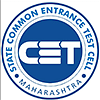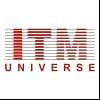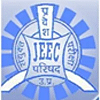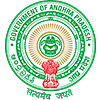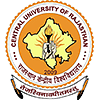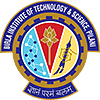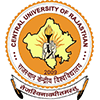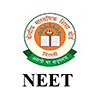
Table of Contents
MHT CET chapter-wise weightage 2025 contains important chapters necessary for preparing the MHT CET 2025 exam. MHT CET 2025 Important Topics include Electromagnetic Induction, P-block Elements, Integration, and Human Health and Disease, which hold high weightage.
The MHT CET is the Maharashtra Health and Technical Common Entrance Test conducted annually by the Government of Maharashtra for admissions to undergraduate engineering and pharmacy degree courses. It is a computer-based exam covering physics, Chemistry, Biology, and Mathematics topics.
Covering and adequately preparing for MHT CET high-weightage topics will help bag good exam scores. Additionally, a score of 150+ is good. MHT CET 2025 aspirants can check this article to learn more about MHT CET 2025 chapter-wise weightage.
MHT CET Subject-wise Weightage 2025
MHT CET exam consists of Physics, Chemistry, and Mathematics syllabus. The list of important topics is discussed in this article. Candidates must make a note to cover all the topics and chapters.
A student can prioritize these topics during the preparation of each subject and boost their overall preparations. Students can use such information for a competitive edge. The subject-wise chapters where examiners focus on forming questions are given below:
Physics Chapterwise Weightage for MHT CET 2025
Candidates should incorporate these topics in their timetable to get good exam marks. The kinetic theory of gases and radiation is considered one of the MHT CET 2025 Important Chapter for preparation.
|
Chapter Name |
Marks Weightage |
|
Atoms, Molecules, and Nuclei |
8% |
|
Circular Motion |
4% |
|
Communication Systems |
1% |
|
Current Electricity |
4% |
|
Elasticity |
2% |
|
Electromagnetic Induction |
6% |
|
Electrons and Photons |
3% |
|
Electrostatics |
7% |
|
Gravitation |
3% |
|
Interference and Diffraction |
4% |
|
Kinetic Theory Of Gases and Radiation |
12% |
|
Magnetic Effects Of Electric Current |
6% |
|
Magnetism |
5% |
|
Oscillations |
8% |
|
Rotational Motion |
7% |
|
Semiconductors |
6% |
|
Stationary Waves |
3% |
|
Surface Tension |
4% |
|
Wave Motion |
5% |
|
Wave Theory Of Light |
2% |
MHT CET Subject Wise Weightage 2025 - Chemistry
Candidates should incorporate these marks and the weightage of the mentioned chapters in their preparation for MHT CET 2025 Chemistry.
|
Chapter Name |
Marks Weightage |
|
Alcohols, Phenols, and Ethers |
8% |
|
Aldehydes, Ketones and Carboxylic acids |
5% |
|
Biomolecules |
4% |
|
Chemical Kinetics |
5% |
|
Chemical Thermodynamics and Energetics |
15% |
|
Chemistry In Everyday Life |
5% |
|
Coordination Compounds |
9% |
|
d And f Block Elements |
8% |
|
Halogen Derivatives Of Alkanes andArenes |
5% |
|
Organic Compounds Containing Nitrogen |
8% |
|
p-Block Elements – Group 15 to 18 |
9% |
|
Polymers |
4% |
|
Solid State |
6% |
MHT CET 2025 Chapter Wise Weightage for Mathematics
Three-dimensional geometry, trigonometric functions, and vectors are estimated to carry high weightage in the exam. Therefore, candidates follow the table and prepare according to the exam.
|
Chapter Name |
Marks Weightage |
|
Applications of Definite Integrals |
4% |
|
Applications of Derivatives |
5% |
|
Bernoulli Trials And BinomialDistribution |
4% |
|
Circles |
6% |
|
Conics |
5% |
|
Continuity |
5% |
|
Differential Equations |
6% |
|
Differentiation |
7% |
|
Integration |
9% |
|
Linear Programming Problems |
2% |
|
Lines |
3% |
|
Mathematical Logic |
3% |
|
Matrices |
5% |
|
Pair Of Straight Lines |
5% |
|
Plane |
4% |
|
Probability Distribution |
8% |
|
Statistics |
3% |
|
Three Dimensional Geometry |
8% |
|
Trigonometric Functions |
8% |
|
Vectors |
7% |
MHT CET Biology Chapter-wise Weightage 2025
The chapter-wise weightage of the biology syllabus that constitutes botany and zoology is mentioned in the table below:
|
Biology Chapters and Topics |
Weightage of the chapter and topic (In percentage) |
|
Botany |
|
|
Plant Diversity |
12% |
|
Plant Anatomy |
4% |
|
Plant Morphology |
7% |
|
Cell Biology & Cell Division |
10% |
|
Bio-molecule |
3% |
|
Plant Physiology |
13% |
|
Plant Reproduction |
9% |
|
Genetics & Biotechnology |
24% |
|
Biology in Human Welfare |
2% |
|
Ecology |
16% |
|
Zoology |
|
|
Animal Diversity |
10% |
|
Animal Tissue |
3% |
|
Structural Organisation in animals |
2% |
|
Human Physiology |
45% |
|
Human Reproduction & Reproductive Health |
18% |
|
Origin & Evolution |
10% |
|
Animal husbandry |
3% |
|
Human Health & Diseases |
9% |
MHT CET Important Topics Subject Wise
MHT CET 2025 important chapters and weightage is mentioned befor and MHT CET 2025 important chapters for Physics, Chemistry, and Biology (Zoology and Botany)are provided below . These topics provide a general outline of what to expect in the MHT CET syllabus. Student must review the important topics to assess their current knowledge level to the exam requirements.
MHT CET Important Chapters from Physics
This is a list of the MHT CET Physics syllabus chapters that are considered important. During their preparation, students need to pay more attention to these subjects.
|
S.No. |
Important Chapters |
Important topics |
|
1. |
Atoms, Molecules, and Nuclei |
Atomic Structure: Bohr's Model, Energy Levels, and Spectrum of Hydrogen |
|
Photoelectric Effect: Concept, Einstein's Equation. |
||
|
Molecular Structure: Types of molecules, Dipole Moment, Van der Waals forces |
||
|
Radioactive Decay: Alpha, Beta, Gamma decay, Half-life, and Mean Life |
||
|
Nuclear Reactions: Fission and Fusion. |
||
|
2. |
Electromagnetic Induction |
Faraday’s Law: Concept of Electromagnetic Induction |
|
Lenz’s Law: Direction of induced current |
||
|
Self and Mutual Inductance. |
||
|
Induced EMF: Derivation and Applications |
||
|
Eddy Currents and their applications (like in electric brakes) |
||
|
3. |
Kinetic Theory of Gases and Radiation |
Kinetic Theory: Derivation of gas laws (Boyle's, Charles’, and Ideal Gas Law). |
|
Ideal Gas Equation and Applications. |
||
|
Law of Equipartition of Energy. |
||
|
Maxwell's Distribution of Velocities. |
||
|
Black Body Radiation: Planck’s Law, Stefan-Boltzmann Law, and Wien's Law. |
||
|
4. |
Magnetic Effects of Current |
Magnetic Field due to Current: Biot-Savart Law, Ampere’s Circuital Law. |
|
Force on a Current-Carrying Conductor. |
||
|
Moving Coil Galvanometer: Construction and Working. |
||
|
Magnetic Induction and its Applications. |
||
|
Force between Parallel Current-Carrying Wires (Ampere's Law). |
||
|
5. |
Oscillations |
Simple Harmonic Motion (SHM): Equation of Motion, Energy in SH |
|
Damped and Forced Oscillations. |
||
|
Resonance. |
||
|
Torsional Oscillations and applications. |
||
|
6. |
Wave Motion |
Types of Waves: Longitudinal and Transverse waves. |
|
Wave Equation: Mathematical formulation of waves. |
||
|
Properties of Waves: Superposition principle, Interference, and Diffraction. |
||
|
Doppler Effect in Sound and Light. |
||
|
Standing Waves: Nodes and Antinodes. |
||
|
7. |
Rotational Motion |
Torque and Angular Momentum: Definition and calculation |
|
Moment of Inertia: Concept and its dependence on mass distribution. |
||
|
Rotational Kinetic Energy and Work-Energy Theorem for Rotation. |
||
|
Rolling Motion: Condition for Pure Rolling, Energy in Rolling Motion. |
||
|
Rotational Dynamics: Newton’s Laws of Rotation, Angular Impulse and Momentum. |
||
|
8. |
Semiconductors |
Types of Semiconductors: Conductors, Insulators, and Semiconductors (Intrinsic and Extrinsic). |
|
Diodes and Zener Diodes: Characteristics and Applications. |
||
|
Transistors: Types (BJT, FET), Working and Applications. |
||
|
Hall Effect: Principle and Applications. |
||
|
Logic Gates: Basic understanding of AND, OR, NOT gates. |
||
|
9. |
Electrostatics |
Coulomb’s Law and its applications. |
|
Gauss’s Law: Application to spherical, cylindrical, and planar symmetry. |
||
|
Capacitance: Energy stored in a capacitor, Parallel Plate Capacitors. |
||
|
Dielectrics: Effect of Dielectrics on capacitance, Dielectric Strength. |
||
|
Electric Field and Potential: Relation between Electric Field and Potential. |
||
|
10. |
Surface Tension |
Surface Tension Definition: Molecular explanation. |
|
Effect of Surface Tension: Drops, Bubbles, and Meniscus. |
||
|
Junction of Surface Tension and Capillarity. |
||
|
Angle of Contact and its Applications. |
||
|
Measurement of Surface Tension: Drop weight method, Capillary rise method. |
MHT CET Important Chapters from Chemistry
The list of important chapters for MHT CET chemistry is listed below. Candidates can refer to the list of books mentioned towards the end of this article to render help.
|
S.No. |
Important Chapters |
Important topics |
|
1. |
Solid State |
Types of Solids: Crystalline vs Amorphous solids. |
|
Lattice and Unit Cell: Types of unit cells (Simple cubic, Body-centered, Face-centered). |
||
|
Close Packing: FCC, BCC, Hexagonal close packing. |
||
|
Defects in Solids: Point defects, Line defects, and their effects on properties. |
||
|
Electrical Properties: Conductors, Insulators, Semiconductors. |
||
|
2. |
Organic Compounds containing Nitrogen |
Amines: Classification, Nomenclature, Basicity, and Reactions (Hofmann's degradation). |
|
Diazonium Salts: Preparation, properties, and reactions. |
||
|
Nitro Compounds: Nitration, Reactions (Reduction to amines). |
||
|
Amines vs Amides: Structure, properties, and differences. |
||
|
Alkaloids: Structure and biological importance (e.g., Morphine, Quinine). |
||
|
3. |
Coordination Compounds |
Ligands: Types of ligands (Monodentate, Bidentate, Multidentate). |
|
Nomenclature of Coordination Compounds. |
||
|
Isomerism in Coordination Compounds: Linkage isomerism, Geometrical isomerism, Optical isomerism. |
||
|
Werner's Theory of coordination compounds. |
||
|
Bonding in Coordination Compounds: Valence Bond Theory, Crystal Field Theory. |
||
|
Stability of Coordination Compounds. |
||
|
4. |
Alcohol Phenol Ether |
Alcohols: Nomenclature, Properties, and Reactions (Oxidation, Reduction, Esterification). |
|
Phenols: Structure, Acidic nature, Reactions (Electrophilic substitution). |
||
|
Ethers: Nomenclature, Properties, and Uses. |
||
|
Preparation of Alcohols, Phenols, and Ethers: From alkenes, halides, and other organic compounds. |
||
|
Aromaticity in Phenols and their reactions (like with bromine). |
||
|
5. |
Chemical Thermodynamics and Energetics |
First Law of Thermodynamics: Internal energy, Work, Heat, Enthalpy. |
|
Second Law of Thermodynamics: Entropy, Gibb's Free Energy. Hess’s Law of Constant Heat Summation. |
||
|
Spontaneity of Reactions: Gibb's free energy change, and conditions for spontaneity. |
||
|
Heat Capacity and Specific Heat. |
||
|
Carnot Cycle and Efficiency. |
||
|
6. |
Biomolecules |
Carbohydrates: Structure of monosaccharides (Glucose, Fructose), Disaccharides (Sucrose, Lactose), |
|
Polysaccharides (Starch, Glycogen). |
||
|
Proteins: Structure of proteins, Amino acids, Peptide bonds, Primary, Secondary, Tertiary, and Quaternary structure. |
||
|
Lipids: Structure, Functions, and Classification (Fats, Oils, Phospholipids). |
||
|
Vitamins and Hormones: Water-soluble and fat-soluble vitamins. |
||
|
Enzymes: Mechanism of enzyme action, Enzyme activity. |
||
|
7. |
Chemical Kinetics |
Rate of Reaction: Definition, Factors affecting rate (Concentration, Temperature, Catalysts). |
|
Order of Reaction: Zero, First, Second-order reactions, and rate constant. |
||
|
Integrated Rate Equations: For different orders of reactions. |
||
|
Arrhenius Equation: Activation energy, Temperature dependence of reaction rate. |
||
|
Catalysis: Homogeneous and heterogeneous catalysis. |
||
|
8. |
d-Block and f-Block elements |
Properties of d-Block Elements: Oxidation states, Magnetic properties, Color. |
|
Coordination Chemistry of d-Block Elements: Ligands, Coordination compounds. |
||
|
Transition Elements: Electronic configuration, Effective nuclear charge. |
||
|
Lanthanides and Actinides: Properties, Occurrence, and Applications. |
||
|
Comparing d-Block, f-Block, and p-Block elements in terms of reactivity and properties. |
||
|
9. |
p-Block elements |
Group 13 Elements: Boron, Aluminium, and their compounds. |
|
Group 14 Elements: Carbon, Silicon, and their compounds (e.g., Silicon Dioxide, Silicones). |
||
|
Group 15 Elements: Nitrogen, Phosphorus, and their compounds (e.g., Ammonia, Phosphoric acid). |
||
|
Group 16 Elements: Oxygen, Sulfur, and their compounds (e.g., Sulfur Dioxide, Sulfuric Acid). |
||
|
Group 17 Elements (Halogens): Chlorine, Fluorine, etc. Reactions and compounds like Bleaching powder. |
||
|
Group 18 Elements (Noble Gases): Properties and applications (e.g., Liquid Helium, Neon signs). |
||
|
10. |
Solutions and Colligative Properties |
Types of Solutions: Solid, Liquid, and Gaseous solutions. |
|
Concentration of Solutions: Molarity, Molality, Normality, and Weight Percentage. |
||
|
Raoult's Law and its applications to solutions. |
||
|
Colligative Properties: Boiling Point Elevation, Freezing Point Depression, Osmotic Pressure, Vapor Pressure Lowering. |
||
|
Van't Hoff Factor: Effect on colligative properties. Ideal and Non-Ideal Solutions. |
MHT CET Important Chapters from Mathematics
Here is a list of important chapters for MHT CET Mathematics. Candidates are expected to channel their full focus on these.
|
S.No. |
Important Chapters |
Important topics |
|
1. |
Calculus |
Limits: Definition, standard limits, properties, and techniques like L'Hopital's Rule. |
|
Differentiation: Rules of differentiation (product, quotient, chain rule), differentiation of standard functions (trigonometric, exponential, logarithmic), implicit differentiation. |
||
|
Integration: Integration of standard functions, methods of integration (substitution, by parts, partial fractions), definite and indefinite integrals, properties of integrals. |
||
|
Applications of Derivatives: Rate of change, tangents and normals, increasing and decreasing functions, maxima and minima. |
||
|
Applications of Integration: Area under curves, volume of solids of revolution. |
||
|
2. |
Functions |
Types of Functions: Polynomial, Rational, Exponential, Logarithmic, Trigonometric functions. |
|
Function Operations: Domain, Range, and Composite functions. |
||
|
Inverse Functions: Inverse of a function, conditions for invertibility, graph of inverse functions. |
||
|
Types of Functions and their Graphs: Linear, Quadratic, Cubic, Absolute value, and Rational functions. |
||
|
3. |
Differentiation |
Derivatives of Functions: Basic differentiation formulas. |
|
Higher-Order Derivatives: Derivatives of functions up to second or higher orders. |
||
|
Implicit Differentiation: Differentiation of equations where y is not explicitly given as a function of x. |
||
|
Logarithmic Differentiation: Derivative of logarithmic functions. |
||
|
Application of Derivatives: Maxima and Minima (optimization problems), Motion problems (velocity, acceleration). |
||
|
4. |
Vectors |
Basic Concepts: Scalar and vector quantities, vector addition, subtraction. |
|
Dot Product: Properties, applications, and geometric interpretation. |
||
|
Vector Algebra: Scalar multiplication, projection of vectors, and vector equations. |
||
|
Application of Vectors: Area and volume calculation, work done in physics |
||
|
Application of Vectors: Area and volume calculation, work done in physics. |
||
|
5. |
Integration |
Methods of Integration: |
|
Definite Integrals |
||
|
Applications |
||
|
6. |
Matrices |
Types of Matrices: Square, rectangular, diagonal, scalar, identity, and zero matrix. |
|
Matrix Operations: Addition, multiplication, transpose, and inverse. |
||
|
Determinants: Properties of determinants, evaluation of determinants (2x2, 3x3 matrices), Cramer's Rule, cofactor expansion. |
||
|
Adjoint and Inverse of a Matrix: Using determinants and adjoint to find inverse of matrices. |
||
|
Application of Matrices: Solving systems of linear equations using matrices. |
||
|
7. |
Three Dimensional Geometry |
Coordinates in 3D: Cartesian coordinates, distance formula, section formula, direction cosines. |
|
Lines in 3D: Equation of a line, parametric form, symmetric form, distance between two skew lines. |
||
|
Planes in 3D: Equation of a plane, angle between planes, distance from a point to a plane. |
||
|
Vectors in 3D: Dot product and cross product in 3D, angle between two vectors, volume of a parallelepiped. |
||
|
Application of 3D Geometry: Geometrical interpretation of vector equations, projections of vectors. |
||
|
8. |
Probability |
Basic Concepts: Random experiment, sample space, events, and types of events (mutually exclusive, independent). |
|
Probability Rules: Addition and multiplication laws, conditional probability, Bayes' theorem. |
||
|
Random Variables: Discrete and continuous random variables, probability distribution functions, mean, and variance. |
||
|
Binomial Distribution: Formula, mean, variance, and applications. Probability Distributions: Poisson, Normal, and Uniform distributions (in case required by the exam). |
||
|
Binomial Distribution: Formula, mean, variance, and applications. Probability Distributions: Poisson, Normal, and Uniform distributions (in case required by the exam). |
||
|
9. |
Limits |
Concept of Limit: Definition of a limit, limit of a function as x approaches a point. |
|
Properties of Limits: Sum, product, and quotient of limits. |
||
|
Standard Limits: Limits of standard functions (trigonometric, logarithmic, exponential). |
||
|
Techniques for Finding Limits: Direct substitution, factorization, rationalization, L'Hopital’s rule. |
||
|
10. |
Continuity and Differentiability |
Continuity: Definition of continuity at a point and in an interval, properties of continuous functions. |
|
Types of Discontinuities: Removable, jump, infinite discontinuities. |
||
|
Differentiability: Relationship between continuity and differentiability, differentiability at a point, differentiability over an interval. |
||
|
Application of Continuity and Differentiability: Intermediate Value Theorem, Rolle's Theorem, Mean Value Theorem. |
MHT CET Important Chapters for Biology
The important chapters for MHT CET biology include topics from botany and zoology. Here is the list of topics that are considered valuable for exam preparation.
|
S.No. |
Important Chapters |
Important topics |
|
1. |
Human Reproduction |
Male Reproductive System: Structure and function of testes, epididymis, vas deferens, and accessory glands. |
|
Female Reproductive System: Structure and function of ovaries, fallopian tubes, uterus, and vagina. |
||
|
Menstrual Cycle: Phases (Follicular, Ovulation, Luteal), hormonal control, and disorders. |
||
|
Fertilization and Embryonic Development: Process of fertilization, early embryonic development, and implantation. |
||
|
Reproductive Health: Contraceptive methods, sexually transmitted diseases (STDs), and infertility. |
||
|
2. |
Sexual Reproduction in Flowering Plants |
Structure of Flower: Male (Stamen), Female (Pistil), and accessory parts of the flower. |
|
Pollination: Types (Self-pollination, Cross-pollination), Agents of pollination. Fertilization: Process, double fertilization in angiosperms, and the formation of seeds and fruits. |
||
|
Post-Fertilization Events: Seed development, seed dispersal mechanisms. |
||
|
Types of Pollination: Insects, wind, and water pollination. |
||
|
3. |
Principles of Inheritance and Variation |
Mendel’s Laws of Inheritance: Law of segregation, law of independent assortment. |
|
Exceptions to Mendel’s Laws: Incomplete dominance, codominance, lethal genes, multiple alleles, and polygenic inheritance. |
||
|
Sex Chromosomes and Sex Determination: Male and female sex chromosomes, mechanisms of sex determination in humans and plants. |
||
|
Linkage and Crossing Over: Genetic recombination, linkage maps. |
||
|
Monohybrid and Dihybrid Crosses: Punnett square and Mendelian ratios. |
||
|
4. |
Molecular Basis of Inheritance |
Structure of DNA: Double helix structure, components (nucleotides, base pairing). |
|
DNA Replication: Mechanism of DNA replication, role of enzymes. |
||
|
Transcription and Translation: Process of RNA synthesis (mRNA, tRNA, rRNA), protein synthesis, codons. |
||
|
Genetic Code: Universal, degenerate, and unambiguous nature of the genetic code. |
||
|
Regulation of Gene Expression: Operon model (lac operon, trp operon). |
||
|
5. |
Evolution |
Darwin’s Theory of Evolution: Natural selection, survival of the fittest. |
|
Modern Synthesis Theory: Genetic variation, mutation, genetic drift, and gene flow. |
||
|
Speciation: Types of speciation (allopatric, sympatric), reproductive isolation. |
||
|
Fossils and Evidence of Evolution: Types of fossils, fossil records, anatomical, and molecular evidence. |
||
|
Human Evolution: Evolutionary history of humans from primates. |
||
|
6. |
Human Health and Disease |
Immunity: Innate and acquired immunity, antibodies, antigens. |
|
Types of Diseases: Infectious diseases (bacterial, viral, fungal), Non-communicable diseases (diabetes, hypertension). |
||
|
Principles of Disease Transmission: Modes of transmission, prevention, and control of diseases. |
||
|
Vaccines and Immunization: Types of vaccines, how they work. |
||
|
Cancer: Types, causes, and treatments. |
||
|
7. |
Photosynthesis in Higher Plants |
Photosynthesis Process: Light-dependent and light-independent reactions. |
|
Pigments Involved: Chlorophyll, carotenoids, and their role in photosynthesis. |
||
|
Photosynthetic Pathways: C3, C4, and CAM pathways. |
||
|
Factors Affecting Photosynthesis: Light, temperature, CO2 concentration, and water availability. |
||
|
Importance of Photosynthesis: Role in the production of glucose and oxygen, basis of life on Earth. |
||
|
8. |
Respiration in Plants |
Aerobic and Anaerobic Respiration: Glycolysis, Krebs cycle, electron transport chain. |
|
Fermentation: Alcoholic and lactic acid fermentation. |
||
|
Respiratory Enzymes: Role of enzymes in different stages of respiration. |
||
|
Respiratory Quotient (RQ): Concept and significance. |
||
|
Factors Affecting Respiration: Temperature, oxygen availability. |
||
|
9. |
Body Fluids and Circulation |
Blood: Composition, blood groups, functions, and clotting mechanism. |
|
Heart and Circulatory System: Structure of the heart, cardiac cycle, types of blood vessels, blood pressure. |
||
|
Lymphatic System: Structure and functions. Human Circulatory Pathways: Systemic and pulmonary circulation. |
||
|
Cardiovascular Diseases: Hypertension, arteriosclerosis, heart attacks. |
||
|
10. |
Excretory Products and their Elimination |
Excretory Organs: Kidneys, liver, lungs, skin. |
|
Structure of Nephron: Functions of glomerulus, |
||
|
Bowman’s capsule, and renal tubules. |
||
|
Formation of Urine: Filtration, reabsorption, secretion, and excretion. |
MHT CET Books for Important Chapters
The important books for MHT CET preparation are mentioned in the table below. The books are curated and presented to derive maximum success. Preparing from these books will help the candidates to score well in MHT CET 2025 Exam.
|
Book Title |
Author/Publisher |
|
Physics |
|
|
The Concepts of Physics (Vol 1 & 2) |
H.C. Verma |
|
Fundamentals of Physics |
Halliday, Resnick, and Walker |
|
Problems in Physics |
I.E. Irodov |
|
Problems in Physics |
S.S. Krotov |
|
Understanding Physics (set of 4 books) |
Arihant |
|
Chemistry |
|
|
Organic Chemistry |
O.P. Tandon |
|
Concept of Physical Chemistry |
P. Bahadur |
|
Concise Inorganic Chemistry |
J.D. Lee |
|
Modern Approach to Chemical Calculations |
R.C. Mukherjee |
|
Complete Reference Manual MH-CET Chemistry |
Arihant Publications |
|
Mathematics |
|
|
Mathematics for MHT CET |
Hemant G.Ainapure |
|
Objective Mathematics |
R.D. Sharma |
|
Trigonometry |
S.L. Loney |
|
Biology |
|
|
Book Title |
Author/Publisher |
|
Dinesh’s Objective Biology |
Pradeep’s Guide on Biology |
|
Ansari’s Objective Botany |
Biology by G.R. Bathla Publications |
|
Trueman’s Biology (Vol 1 & 2) |
S.C. Verma’s Biology |
Preparation Tips for MHT CET Important Chapters
The books and important chapters for MHT CET are mentioned above in this article. However, here are some important MHT CET preparation tips that will help you take the exam one step further:
- Begin the preparation by following the exam pattern and assessing the syllabus.
- Next, buy the books that are necessary for the preparation process.
- Chalk out the chapters that are important and carry high weight.
- Make notes of all the important chapters and topics. Additionally, include time for revision.
- Lastly, practice from the previous year’s question papers.
Students should always begin their preparation with proper knowledge about the examination, what the examination plans to test the students on, and how challenging the level of an assessment will be during the examination. With information regarding all these factors, the aspirant will form a preparation plan, boost their performance, and achieve a great MHT CET score and admission to a reputed institute.
FAQs on MHT CET Chapterwise Weightage
Q: Which subjects are covered in the MHT CET syllabus?
Q: What are the high-weightage topics for MHT CET preparation?
Q: What are the best books for MHT CET preparation?
Q: How should students prepare for MHT CET high-weightage chapters?
Q: What is a good score in the MHT CET?
